Clinical Learning Opportunities
Our orthopaedic residency program offers an organized educational program with appropriate
supervision and a strong base of varied clinical experiences. The faculty is committed to teaching
and has a record of scholarship and research activity. At UTMB, residents see enough volume for an
excellent clinical experience, but not so much that it interferes with their overall education.
Our department enjoys strong support from the hospital, medical school, other academic departments as
well as hospitals and specialty centers in the surrounding area. Although residents are well supervised,
they will be given opportunities to assume increasing responsibility as their capabilities develop.
PGY 1 - Intern Year
The resident’s first year includes six months of orthopaedics, and six months divided between various
surgical subspecialties. The current schedule includes Orthopaedic rotations in Joint Arthroplasty,
Sports Medicine, Pediatrics, TDCJ, and Foot and Ankle. Other rotations consist of Vascular Surgery,
Neurosurgery, Surgical ICU, Burns, and Night Float/Trauma Acute Care.
PGY2 – PGY5
After the intern year, residents begin rotations through the UTMB Orthopedic Surgery Clinical Services.
Residents will also rotate through hospitals and specialties in Houston and the surrounding area.
The volunteer faculty at these participating institutions are crucial in providing the great variety
of clinical education provided here.
Texas Children's / Baylor
Texas Orthopaedic Hospital
MD Anderson Cancer Center
Educational Program
Sports Medicine
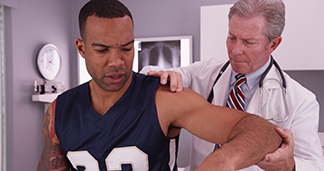
The Sports Medicine service emphasizes sports medicine and acute
and chronic disorders of the knee and shoulder. Educational objectives
include:
- Knowledge of anatomy and biomechanics of knee and shoulder.
- Knowledge of sports medicine, emphasizing off-season training methods, pre-participation exam and disqualifying
conditions, on-the-scene exam for injury, and criteria for return to play.
- Knowledge of early- and long-term knee and shoulder rehabilitation, including modalities, exercise, and orthotics.
- Ability to use arthroscopic diagnostic and surgical techniques for managing disorders of the shoulder, knee, elbow, and ankle.
- Ability to evaluate and surgically treat knee and
shoulder disorders utilizing joint replacement, arthrodesis, and other
techniques as needed.
- Ability to evaluate and non-operatively manage chronic knee and shoulder disorders.
- Ability to evaluate and manage, both operatively and
non-operatively, extremity trauma, including fractures, with emphasis on
the shoulder and knee.
Joint Arthroplasty

The Joint Arthroplasty service emphasizes reconstructive surgery of the hip, including proximal femoral
and pelvic osteotomies, arthroplasty, and fixation of pelvic fractures. Educational objectives include:
- Knowledge of anatomy and biomechanics of hip and pelvis.
- Knowledge of early and long-term rehabilitation of
patients with hip disorders and evaluate and manage chronic hip
disorders non-operatively.
- Knowledge of principles of prosthetic design and
materials in total hip replacement and to evaluate and plan prosthetic
and non-prosthetic arthroplasties.
- Ability to evaluate and operatively manage chronic hip disorders using techniques including joint
replacement, non-implant arthroplasty, osteotomy of the pelvis and hip, and arthrodesis.
- Ability to evaluate and manage extremity trauma with an
emphasis on the pelvis, hip and upper femur, both operatively and
non-operatively.
Pediatric Orthopaedics
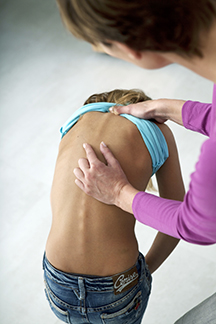
The Pediatrics Orthopaedics service deals with all aspects of pediatric orthopaedics. Educational objectives include:
- Knowledge of normal and abnormal musculoskeletal development and anatomy.
- Ability to assess and manage common pediatric orthopaedic disorders including developmental dislocation of the hip,
scoliosis, avascular necrosis of the hip, slipped capital femoral epiphysis and clubfoot.
- Ability to assess and manage pediatric neuromuscular diseases, limb length discrepancy,
common angular and torsional variations, and pediatric trauma both operatively and non-operatively.
Spine Surgery

The Spine Surgery service manages adult spine problems, including
degenerative disease, infection, trauma, and tumors. Educational
objectives include:
- Knowledge of the anatomy of the spine, spinal cord, and nerve roots.
- Proficiency in assessing low back and neck pain and
non-operative and operative management
with specific emphasis on the psychological aspect of
back pain. Knowledge of the sound principles of spine rehabilitation
programs.
- Ability to assess and manage, non-operatively and
operatively, acute disc herniation of the lumbar, thoracic, and cervical
spine.
- Ability to assess and manage spinal trauma, both non-operatively and operatively.
- Ability to assess and manage spinal tumors, primary and
metastatic, with the same approach that is used in the trauma principles
of reconstructing the spine after extensive spinal resection.
- Ability to assess and manage spinal disorders, such as spondylolisthesis, adult scoliosis, and post-traumatic deformities.
- The residents will become comfortable in the use and
handling of modern spinal instrumentation, including hooks, rods,
plates, pedicle screws, and wires.
Foot and Ankle Surgery
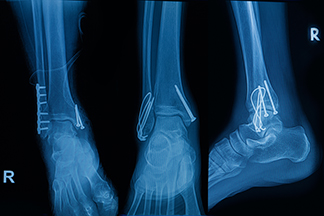
The Foot and Ankle service manages patients with acute and chronic
disorders of the foot, particularly those with diabetic ischemic foot
disease,
as well as foot, ankle, and leg trauma. Educational objectives
include:
- Knowledge of anatomy and biomechanics of the foot and ankle.
- Ability to assess and manage, operatively and
non-operatively, chronic foot disorders including bunions and other
dynamic deformities and motor and sensory deficits.
- Ability to assess and manage acute disorders of the foot and ankle including inflammatory states.
- Ability to perform operative reconstruction of the foot and ankle, including arthrodesis.
- Ability to assess and manage, operatively and non-operatively, trauma to the foot, ankle, and leg.
- Knowledge of identification and antibiotic susceptibility of organisms.
- Ability to plan and execute long-term non-operative
management of complex musculoskeletal infection, including chronic
osteomyelitis and diabetic foot infection.
- Knowledge of long-term rehabilitation.
- Ability to plan and execute operative management of
complex musculoskeletal infection, including debridement, antibiotic
bead implantation,
reconstruction with and without bone lengthening or
transport (Ilizarov), arthroplasty, and arthrodesis.
Hand Surgery
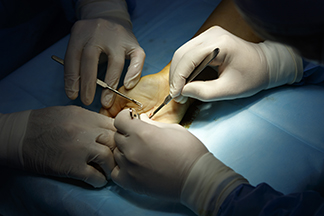
The Hand Surgery service deals with acute and chronic disorders
of the hand, wrist, elbow, and shoulder, including tumors and congenital
anomalies
and upper extremity trauma. Educational objectives include:
- Knowledge of anatomy and biomechanics of the upper extremity.
- Ability to assess and manage acute upper extremity problems, including inflammatory states and infection.
- Ability to assess and manage chronic upper extremity
disorders, including rheumatoid arthritis, motor and sensory deficits,
and resulting deformities.
- Ability to assess and manage hand and upper extremity trauma including fractures, tendon, nerve, and vascular injuries.
- Proficiency in microsurgical techniques.
General Orthopaedics and Texas Department of Criminal Justice (TDCJ)
The Texas Department of Criminal Justice (TDCJ) Service is a general
orthopaedic service, meeting the orthopaedic needs of the inmates of the
Texas
Department of Criminal Justice System. Educational objectives
include:
- Knowledge of the anatomy and biomechanics of the shoulder, knee, hand, and foot.
- Knowledge of early- and long-term shoulder, knee, hand, and foot rehabilitation, including modalities, exercise, and orthotics.
- Ability to manage chronic knee, shoulder, hand, and foot disorders.
- Proficiency in the arthroscopic diagnosis and surgical management of shoulder, knee, elbow, and ankle disorders.
- Ability to operatively manage shoulder, knee, hand, and foot disorders, including joint replacement and arthrodesis.
- Ability to operatively and non-operatively treat extremity trauma, including fractures, of the shoulder, knee, hand, and foot.
Orthopaedic Rehabilitation
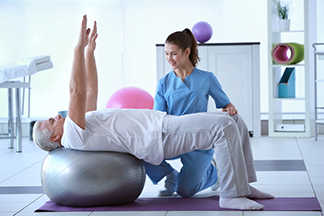
The UTMB Department of Orthopaedics and Rehabilitation offers a broad rehabilitation experience for the orthopaedic resident.
A multidisciplinary team approach to patient care is a prominent
feature of patient care, both in the inpatient setting and in the
clinic.
The orthopaedic resident has extensive opportunities to
participate in and direct the team’s treatment of patients. These
experiences as
well as participation in journal club, lectures, and faculty
teaching rounds lead to an in-depth understanding of both short- and
long-term management
strategies to optimize functional outcomes and quality of life.
Educational objectives are to increase the residents knowledge and ability in the following areas:
- Ability to recognize and manage complications of
orthopaedic and neurologic impairment including immobility, spasticity,
pain, paralysis, sensory loss, and cognitive deficits.
- Ability to order ancillary services, monitor functional progress, and direct the multidisciplinary team.
- Ability to measure functional outcomes including
independence in daily living skills, mobility, vocational potential, and
psychosocial adjustment.
- Knowledge of impairment, disability, and handicap
measures and community resources, including assistive technology to
optimize functional independence and vocational productivity.
- Ability to implement both nonsurgical and surgical
treatments of contractures and the potential complications of these
treatments.
Call Duty
Both junior and senior residents take call, averaging once every
seven to eight nights. Due to the level of activity in UTMB’s emergency
room,
the resident can expect to be busy on call nights dealing with
orthopaedic trauma.